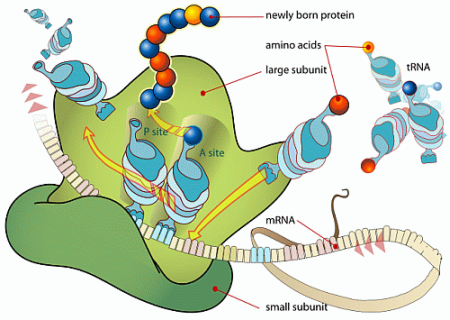Proverbially, it is said that if paleontologists were to discover a rabbit in Cambrian era fossil strata, that would be an empirical refutation of macro-evolutionary theory. UD contributor, News, has therefore raised a “but what about . . . ? “ in light of finding “complex non-marine multicellular eukaryotes in Precambrian strata . . . ” and specifically:
large populations of diverse organic-walled microfossils extracted by acid maceration, complemented by studies using thin sections of phosphatic nodules that yield exceptionally detailed three-dimensional preservation. These assemblages contain multicellular structures, complex-walled cysts, asymmetric organic structures, and dorsiventral, compressed organic thalli, some approaching one millimetre in diameter. They offer direct evidence of eukaryotes living in freshwater aquatic and subaerially exposed habitats during the Proterozoic era.
As a further kicker, we must observe a date:”one billion years.”
The very first response, by Dr REC, was dismissive:
A longer, more gradual history of Eukaryotes and of colonization of land renders Darwinism more doubtful?
Where things get very intersting is with the onward suggestion of a gradual unfolding of life from simple to complex forms.
Therein lieth the rub: there ain’t no “simple” life forms.
We can see that if we start from the undeniable fact that we find complex cells in the Cambrian fossils.
Somehow, though, the full force of this point has not hit home hard enough.
So, let’s rephrase: what if we were to discover a ROBOT in the Cambrian era fossils?
You ask me: y’mean like this lovely but unsettling young lady?
Fig. A: Actroid-DER, developed by KOKORO Inc for customer service, appeared in the 2005 Expo Aichi Japan. The robot responds to commands in Japanese, Chinese, Korean, and English. (Source: Wiki, under GNU.)
Nah, more like this:
Fig. B: A position-arm robot (Source: Wiki, KUKA Roboter GmbH public domain)
Or, to get more direct, like this:
Fig. C: The Ribosome in action, showing the tRNAs acting as amino acid taxis and position-arm pick and place units that click successive amino acids onto an emerging protein (Source: Wiki, public domain.)
But, that’s different!
Not really.
A pick-place robot arm with a tool-tip is a digitally programmed device that carries out pre-programmed instructions. The tRNA molecules are loaded with amino acid monomers (usually, there are twenty different varieties) and on the opposite ends they have anti-codons that are key-lock coded to the successive three-letter, 64-state codons in the mRNA tape. That mRNA tape in turn derives from the DNA code in the nucleus, and the incrementally assembled protein is folded and dispatched to the place where it can best be put to work, often using the Golgi apparatus as a cellular post office.
In short, the macro-scale position-arm robot and the DNA-Ribosome, mRNA, enzymes and proteins, tRNA system that makes new proteins, are both step by step digital code controlled mechanical assembly processes.
And, so we must ask a few questions, to clarify our views on origins of life and of its diverse forms, and the empirically based grounds for these views:
(1) What is the only empirically observed source of codes, algorithms, and assembly lines?
(2) Is it credible that such entities can spontaneously self-assemble from a soup of monomers in a warm little electrified pond, or a hot undersea vent, or the like?
(3) On what empirically grounded basis do you draw your conclusions?
(4) What does such imply about the origin of life?
(5) Since, embryogenesis transforms a unicellular organism into an integrated assemblage of tissues, organs and the like in a complex, functionally organised body plan, requiring a considerable further body of DNA, what does the above imply about the mechanism for the origin of major body plans?
(6) What is the observed, evidence that small undirected genetic changes in populations, culled out by differential reproductive success, can be and most likely was responsible for the origin of the complex functional organisation and of digitally coded, algorithmic information and associated implementing machinery found in major body plans and species, including our own?
(7) In short, is the following excerpt from Darwin’s summing up in Origin, Ch 15, suitably updated, an empirically — observationally — well-warranted conclusion, or is it in large part an inference on imposition of the concept that scientific explanation, must only be “naturalistic”? Darwin:
It is interesting to contemplate a tangled bank, clothed with many plants of many kinds, with birds singing on the bushes, with various insects flitting about, and with worms crawling through the damp earth, and to reflect that these elaborately constructed forms, so different from each other, and dependent upon each other in so complex a manner, have all been produced by laws acting around us. These laws, taken in the largest sense, being Growth with Reproduction; Inheritance which is almost implied by reproduction; Variability from the indirect and direct action of the conditions of life and from use and disuse: a Ratio of Increase so high as to lead to a Struggle for Life, and as a consequence to Natural Selection, entailing Divergence of Character and the Extinction of less-improved forms. Thus, from the war of nature, from famine and death, the most exalted object which we are capable of conceiving, namely, the production of the higher animals, directly follows. There is grandeur in this view of life, with its several powers, having been originally breathed by the Creator into a few forms or into one; and that, whilst this planet has gone cycling on according to the fixed law of gravity, from so simple a beginning endless forms most beautiful and most wonderful have been, and are being evolved. [Origin, Ch 15.]
Most of all: why do you draw your particular conclusions? END


